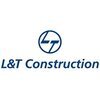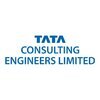Filter interviews by
Kalbhor Construction Co Interview Questions and Answers
6 Interview questions
Personal protective equipment (PPE) is equipment worn to minimize exposure to hazards that cause serious workplace injuries and illnesses.
PPE includes items such as safety helmets, gloves, eye protection, high-visibility clothing, safety footwear, and safety harnesses.
PPE should be selected based on the hazards present in the workplace.
PPE should be properly fitted and maintained.
Employees should be trained on how...
A hazard is any source of potential harm or danger that can cause injury, illness, or death.
Hazard can be physical, chemical, biological, or psychological in nature.
Examples of hazards include falls from heights, exposure to toxic chemicals, infectious diseases, and workplace stress.
Identifying and controlling hazards is essential for ensuring safety in the workplace.
Hazards can be minimized through the use of per...
The duties of a safety supervisor include ensuring compliance with safety regulations, conducting safety inspections, and providing safety training.
Ensuring compliance with safety regulations and standards
Conducting safety inspections and identifying potential hazards
Providing safety training to employees
Investigating accidents and incidents
Developing and implementing safety policies and procedures
Maintaining safe...
Safety is the state of being protected from harm, danger, or injury.
Safety is a priority in any workplace or environment.
It involves identifying and assessing potential hazards and taking measures to prevent accidents or injuries.
Safety also includes providing proper training and equipment to employees.
Regular inspections and maintenance of equipment and facilities are necessary to ensure safety.
Emergency prepared...
Normal consistency of cement refers to the amount of water required to form a paste of standard consistency.
Normal consistency is determined by the Vicat apparatus test.
It is important for the workability and strength of the cement.
The standard consistency is typically around 25-30% water by weight.
The test involves measuring the depth of penetration of a Vicat plunger into the cement paste.
The consistency can var...
Normal consistency of cement refers to the amount of water required to form a paste of standard consistency.
Normal consistency is determined by the Vicat apparatus test.
It is expressed as a percentage of the weight of dry cement.
The standard consistency is typically around 25-30%.
The test involves gradually adding water to a sample of cement until a paste of standard consistency is formed.
Kalbhor Construction Co Interview Experiences
2 interviews found
I applied via Walk-in and was interviewed in Apr 2024. There were 2 interview rounds.
(2 Questions)
- Q1. Normal consistency of cemet
- Ans.
Normal consistency of cement refers to the amount of water required to form a paste of standard consistency.
Normal consistency is determined by the Vicat apparatus test.
It is important for the workability and strength of the cement.
The standard consistency is typically around 25-30% water by weight.
The test involves measuring the depth of penetration of a Vicat plunger into the cement paste.
The consistency can vary bas...
- Q2. Aggregate test specific gravity
(2 Questions)
- Q1. Normal consistency of cement
- Ans.
Normal consistency of cement refers to the amount of water required to form a paste of standard consistency.
Normal consistency is determined by the Vicat apparatus test.
It is expressed as a percentage of the weight of dry cement.
The standard consistency is typically around 25-30%.
The test involves gradually adding water to a sample of cement until a paste of standard consistency is formed.
- Q2. Soil test mdd omc
Interview Preparation Tips
Interview Questionnaire
4 Questions
- Q1. What is safety?
- Ans.
Safety is the state of being protected from harm, danger, or injury.
Safety is a priority in any workplace or environment.
It involves identifying and assessing potential hazards and taking measures to prevent accidents or injuries.
Safety also includes providing proper training and equipment to employees.
Regular inspections and maintenance of equipment and facilities are necessary to ensure safety.
Emergency preparedness ...
- Q2. Do you know what are the duitys of safety supervisor?
- Ans.
The duties of a safety supervisor include ensuring compliance with safety regulations, conducting safety inspections, and providing safety training.
Ensuring compliance with safety regulations and standards
Conducting safety inspections and identifying potential hazards
Providing safety training to employees
Investigating accidents and incidents
Developing and implementing safety policies and procedures
Maintaining safety re...
- Q3. What is hazard?
- Ans.
A hazard is any source of potential harm or danger that can cause injury, illness, or death.
Hazard can be physical, chemical, biological, or psychological in nature.
Examples of hazards include falls from heights, exposure to toxic chemicals, infectious diseases, and workplace stress.
Identifying and controlling hazards is essential for ensuring safety in the workplace.
Hazards can be minimized through the use of personal...
- Q4. What is the person be protective equipment?
- Ans.
Personal protective equipment (PPE) is equipment worn to minimize exposure to hazards that cause serious workplace injuries and illnesses.
PPE includes items such as safety helmets, gloves, eye protection, high-visibility clothing, safety footwear, and safety harnesses.
PPE should be selected based on the hazards present in the workplace.
PPE should be properly fitted and maintained.
Employees should be trained on how to p...
Top trending discussions






Interview questions from similar companies

Assistant Manager Interview Questions & Answers
Kalpataru Projects Internationalposted on 29 Jul 2022
I applied via Naukri.com and was interviewed before Jul 2021. There were 2 interview rounds.
(1 Question)
- Q1. All about core knowledge in specified sector of my existing work experience.
(1 Question)
- Q1. Salary discussion and other benefits.
Interview Preparation Tips

Senior Engineer Interview Questions & Answers
Kalpataru Projects Internationalposted on 4 Jan 2021
I applied via Naukri.com and was interviewed in Jul 2020. There were 3 interview rounds.
Interview Questionnaire
1 Question
- Q1. About structur like, Shuttring and steel dia wise wait per/m special gravity of cement & aggregate, related QC
Interview Preparation Tips

Senior Engineer Interview Questions & Answers
Megha Engineering & Infrastructuresposted on 23 Oct 2020
I applied via Recruitment Consultant and was interviewed in Apr 2020. There were 3 interview rounds.
Interview Questionnaire
1 Question
- Q1. About HT/LT,Motor/Feeder & Substation Errection & Commission.
Interview Preparation Tips

Assistant Manager Interview Questions & Answers
Larsen & Toubro Limitedposted on 4 Mar 2022
I applied via Approached by Company and was interviewed before Mar 2021. There was 1 interview round.
(1 Question)
- Q1. It asks your old experience based questions
Interview Preparation Tips

Assistant Manager Interview Questions & Answers
Larsen & Toubro Limitedposted on 16 Dec 2021
I applied via Walk-in and was interviewed before Dec 2020. There were 4 interview rounds.
Interview Questionnaire
3 Questions
- Q1. What is TPM?
- Ans.
TPM stands for Total Productive Maintenance, a system that aims to maximize equipment effectiveness and minimize downtime.
TPM involves regular maintenance and inspection of equipment to prevent breakdowns
It also includes training employees to operate and maintain equipment properly
TPM aims to create a culture of continuous improvement and teamwork
Examples of TPM tools include visual management, autonomous maintenance, ...
- Q2. How you plan routine maintenance for your plant ?
- Q3. What is MTTR?
- Ans.
MTTR stands for Mean Time To Repair. It is the average time taken to repair a system or equipment after a failure.
MTTR is a key metric used in maintenance management.
It helps in measuring the efficiency of maintenance processes.
MTTR can be calculated by dividing the total downtime by the number of repairs.
For example, if a machine was down for a total of 10 hours and it took 2 repairs to fix it, the MTTR would be 5 hou...
Interview Preparation Tips

Senior Software Engineer Interview Questions & Answers
Larsen & Toubro Limitedposted on 11 Nov 2021
I applied via Referral and was interviewed before Nov 2020. There were 4 interview rounds.
Interview Questionnaire
4 Questions
- Q1. What is dependency injection?
- Ans.
Dependency injection is a design pattern where the dependencies of an object are provided externally.
Dependencies are objects that a class needs to function properly
Dependency injection allows for loose coupling between objects
There are three types of dependency injection: constructor injection, setter injection, and interface injection
Example: Instead of creating a new instance of a dependency within a class, the depe...
- Q2. What is steam api?
- Ans.
Steam API is a set of tools and resources for game developers to integrate Steam features into their games.
Steam API provides access to features such as matchmaking, achievements, and user profiles.
Developers can use Steamworks SDK to integrate Steam features into their games.
Steam API also allows for in-game purchases and microtransactions.
Examples of games that use Steam API include Counter-Strike: Global Offensive a...
- Q3. Thread life cycle, deamon thread, deadlock
- Q4. Internal working of hashmap
- Ans.
HashMap is a data structure that stores key-value pairs and uses hashing to retrieve values quickly.
Hashing function is used to convert the key into an index of an array where the value is stored.
Collisions occur when two keys have the same hash value, which is resolved using separate chaining or open addressing.
HashMap uses an array of linked lists to handle collisions.
The load factor determines when the HashMap shoul...
Interview Preparation Tips
Skills evaluated in this interview

Senior Engineer Interview Questions & Answers
Larsen & Toubro Limitedposted on 25 Nov 2021
I applied via Naukri.com and was interviewed in May 2021. There were 4 interview rounds.
Interview Questionnaire
1 Question
- Q1. Properties of steel & concrete, PSC & RCC structure, Execution strategy , How can we assist the designer according to actual site conditions etc
- Ans.
The properties of steel and concrete, PSC and RCC structures, execution strategy, and assisting the designer according to site conditions.
Steel has high tensile strength and is commonly used in construction for beams, columns, and reinforcement.
Concrete is a composite material made of cement, aggregates, and water, providing compressive strength and durability.
PSC (Prestressed Concrete) structures use pre-tensioning or...
Interview Preparation Tips

Assistant Manager Interview Questions & Answers
Larsen & Toubro Limitedposted on 30 Jul 2021
Interview Questionnaire
2 Questions
- Q1. Finishing and masonary work, IS code, Scafolding work related questions mainly.
- Q2. Previous projects flow diagram
- Ans.
I have created flow diagrams for various projects in my previous roles as an Assistant Manager.
Created flow diagrams to visualize project processes and identify areas for improvement
Used tools such as Microsoft Visio and Lucidchart to create diagrams
Collaborated with team members to ensure accuracy and completeness of diagrams
Presented diagrams to upper management to communicate project progress and identify potential ...
Kalbhor Construction Co Interview FAQs
Tell us how to improve this page.
Interview Questions for Popular Designations
Overall Interview Experience Rating
based on 1 interview experience
Difficulty level
Duration
Interview Questions from Similar Companies
Kalbhor Construction Co Reviews and Ratings
based on 13 reviews
Rating in categories
|
Safety Officer
6
salaries
| ₹2.4 L/yr - ₹4.5 L/yr |
|
Store Incharge
4
salaries
| ₹2.2 L/yr - ₹2.2 L/yr |
|
Civil Site Incharge
4
salaries
| ₹8.5 L/yr - ₹10 L/yr |
|
Senior Civil Site Engineer
4
salaries
| ₹3 L/yr - ₹4.3 L/yr |
|
Project Manager Civil
3
salaries
| ₹6 L/yr - ₹6 L/yr |

Larsen & Toubro Limited

L&T Construction

Tata Projects

Megha Engineering & Infrastructures
- Home >
- Interviews >
- Kalbhor Construction Co Interview Questions









